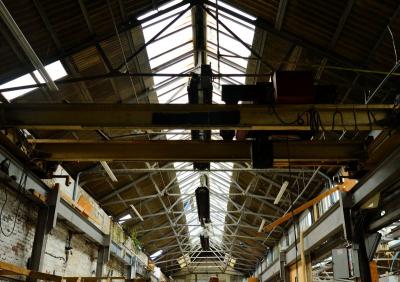Renting turned out to be as dangerous for production engineers as for families.
The putting into financial play in the late 1980s of the nation’s castings, forgings and machining engineers had the effect of stripping out their ownership of their own sites and thus leaving them prey to the real estate sector and its exorbitant demands.
New Zealand’s short lease regime and even shorter rent review periods effectively threw the nation’s medium to heavy production engineers into the hands of the non-productive property sector.
This bitter harvest coincided with the disappearance from New Zealand of its merchant banking capability. There is no merchant finance capability now in the accepted risk participation-ownership sense.
The fact that the engineers had been stripped of their site ownership meant that they had to turn now to the Australian commercial banks with their reluctance to lend on anything that was not backed by clear land title.
This did not become immediately obvious, however, partly because the tariff protection abolition that accompanied this boom-bust era took time to dismantle.
There was some good news too from Europe.
The events surrounding the fall of the Berlin Wall meant that Eastern Europe was identified as an important new market. Backed by the government, notably in the form of assistance from the New Zealand embassy in Moscow several engineering bi lateral trade deals were exploited within the old iron curtain.
Immediately after this there began the intensive trade with China.
This now allowed production engineers to start abandoning their sites, which they now did not own anyway, and focus on their design and brand work in New Zealand while farming out their production to Asia.
It was now though as the end of import restrictions began to finally melt away under accelerating globalisation that the remaining production engineers on leases began to feel the chill winds of change.
For the long established production engineers, the ones that had gone through the 80s property and credit bubble, and in the process had lost title to their yards and premises what had once been asset now became a big liability
Heavy engineers were historically positioned near to rail and ports and thus their now leased sites became attractive to the premium residential and leisure sector.
Which is what the property rotators had gambled on in the first place.
Another problem was and is that the once-forecast inland container depots never materialised in sufficient bulk to take the pressure off port land, the land that the engineers now leased and which became increasingly prone to lease rent hikes.
The engineer now became the industrial version of a fashionable restaurant. If they did badly- then they did badly. Should they do well- then their landlord was in for their share of the bounty, knowing too that if the tenant quit that there would be plenty of service sector takers for the site.
The point being that the speculators apportioned no value to the gantries, rolling beds, and other such fixtures other than scrap value
It is in borrowing though that the leased land problem is most evident for engineers. They cannot borrow on improved value. Machine tools of any value will be leased anyway, probably from UDC which, incidentally this year was sold to Chinese interests.
The tenancy position is not so critical for assemblers and process engineers who sell finished goods into retail with its accelerated turnover and thus returns based on measurable cash flow from consumers.
But for the heavy project engineering sector with its ever-extending payment times and attendant payment uncertainties the failure to possess the title to their own premises increasingly proved fatal.
Some lease booby trap fuses were longer than others. But in the end the results were the same. The sites leased out on a service sector rent level could no longer sustain their original purpose of production.
A curious difference between the New World and the Old World is that leasing and renting has never been accepted as an economic proposition in the new world.
We can see now that this applies as much to the industrial sector as it does to the residential sector.
This systematic undercutting of the nation’s productive capacity was widely applauded at the time by management theoreticians whose slogan was that production engineers among others should “stick to their knitting.”
In the event, and as we can now see, the loss of title to their own works meant that the engineers now became involved instead in the complex world of leases.
Especially and willy-nilly they found themselves in the sphere of the property management company with its attendant contract that ensures that whichever side wins or loses the possessor of the contract always comes out the winner.
| From the This email address is being protected from spambots. You need JavaScript enabled to view it. || Wednesday 12 April 2017 |||





